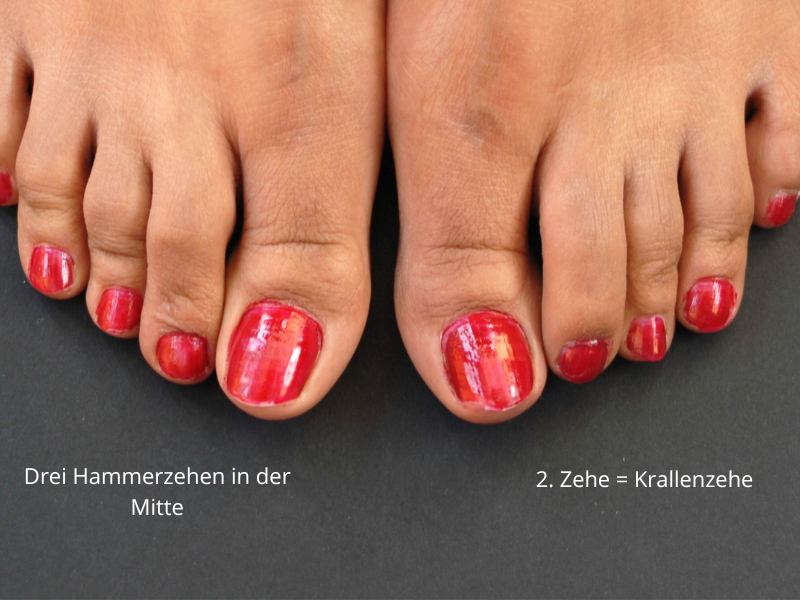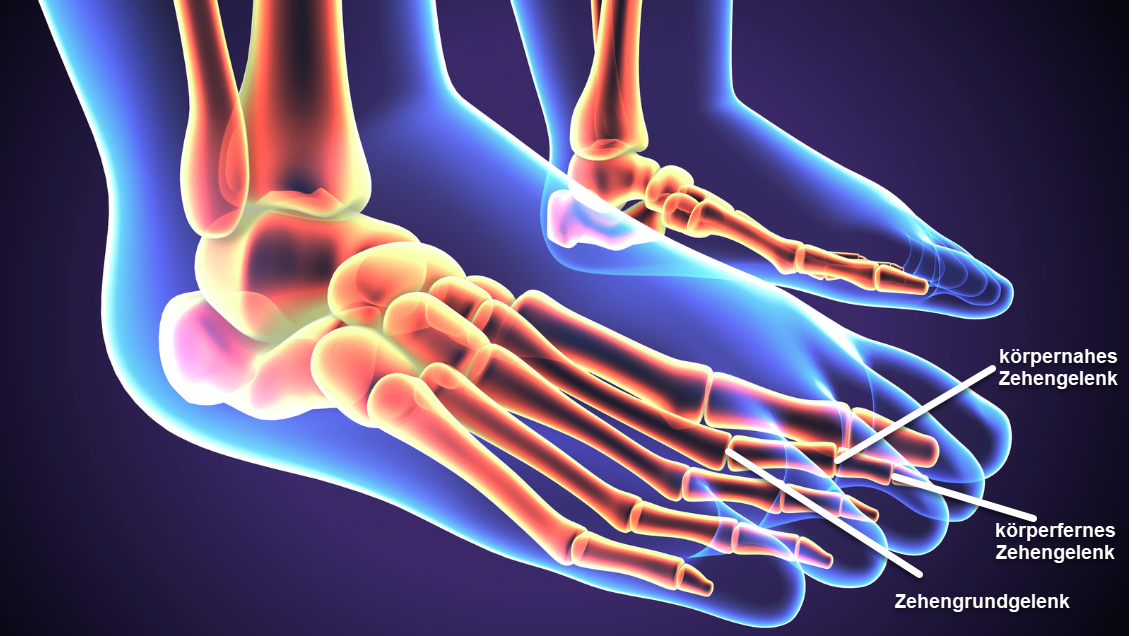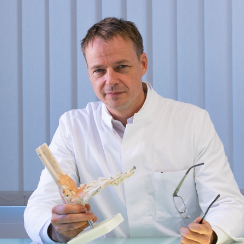I am often asked: What is the difference between hammertoe surgery and claw toe surgery? In line with this question, I would like to clarify in this blog article whether and how hammer toe surgery differs from claw toe surgery.
But first: What actually distinguishes a claw toe from a hammer toe? Have you ever noticed that some people have difficulty walking because of their toes? Do you have one or two toes that are curved and difficult to straighten? If so, you may have either a hammer toe or a claw toe. It is important to know the difference, because each deformity requires individual treatment.
How do hammertoes and claw toes differ?
To make the distinction between hammertoes and claw toes understandable, here is a little information about the toe joints:
- All small toes are equipped with three joints:
- The metatarsophalangeal joint is the joint at the base of the toe, at the transition from the metatarsus to the toe.
- The joint closest to the body is the toe joint closest to the body or foot. The proximal interphalangeal joint (PIP).
- The distal joint is the end joint that is furthest away from the foot and the rest of the body. The distal interphalangeal joint.
In both hammertoes and claw toes, the base joint and the joint close to the body come into an opposing, bent position. The position of the end joint ultimately determines whether it is a hammer toe or a claw toe (see illustration above).
Hammertoe and claw toe distinction:

In the case of the hammer toe, the end joint is bent in the opposite direction to the proximal joint. The distal toe joint is hyperextended, the proximal and proximal joints of the toe are bent. The proximal and middle phalanges stick up like a "small hammer". This often results in pain due to friction on the shoe at the joint of the toe near the body.
In claw toe, the phalanges are shaped like a claw. The tip of the toe is bent towards the ground (the distal toe joint is also permanently bent) and can therefore lead to additional pain at the tip of the toe.
What are the causes of hammertoes and claw toes?
The causes of hammertoes and claw toes are often problems with the statics of the foot, which can lead to overloading in certain parts of the foot. These overloads can in turn lead to misalignments of the pivot points of the toe muscles. This results in an imbalance between the flexor and extensor muscles of the toes. Since the toe muscles span several joints, this imbalance usually affects all toe joints. Shoes that are too tight can also put the toes in such an imbalanced position.
Can you have both hammertoes and claw toes on one foot?
Yes, it is possible to have both hammertoes and claw toes on one foot. Depending on the cause and the general condition of the patient, it may make sense to eliminate the static cause or to correct the toe position symptomatically. The latter is even possible on an outpatient basis.
So how does hammertoe surgery differ from claw toe surgery?
The procedure for a hammer toe operation and a claw toe operation can be different, but does not have to be. It depends not only on which deformity needs to be corrected, but also on the cause, the severity of the deformity, the static of the foot, etc.
Tonio Gottlieb, MD:
„Each patient situation MUST be considered and decided on a case-by-case basis. There is no blanket recommendation. Every toe or foot malposition has to be considered individually according to its causes and the personal needs of the patient. In some patients a reconstruction of the arch of the foot is useful, in others a symptomatic correction is sufficient. You will receive a stringent treatment recommendation from me, based on your personal situation.”
How useful is it to correct hammertoes and claw toes in one procedure?
It may make sense to correct both hammertoes and claw toes or other foot deformities that are on ONE foot in one operation. The healing time and recovery time of a combined operation may be more efficient. Again, it is imperative: Your designated foot surgeon will recommend the ideal approach based on your situation.
When should I see a foot doctor if I suspect I have hammer toes or claw toes?
As a general rule, as soon as you notice deformities, curvatures or unusual inclinations in your toes, you should consult a foot specialist. Especially in the early stages of a small toe deformity, surgical correction may not yet be necessary. Often, regular foot gymnastics, physiotherapy or insoles can provide good support.
If your toe deformities cause pain, have severe pressure points, are reddened and swollen, you should consult a foot surgeon at the latest, who will advise you in detail and recommend an individual procedure.
The private foot surgery practice of Tonio Gottlieb, MD specialises, among other things, in surgical procedures on the little toes, the bunion and the foot. Dr. Gottlieb, MD pays attention to a sustainable and causal treatment that is holistically coordinated. This means that the whole foot, the foot statics and the body statics are taken into consideration.
Learn more about Tonio Gottlieb MD now



